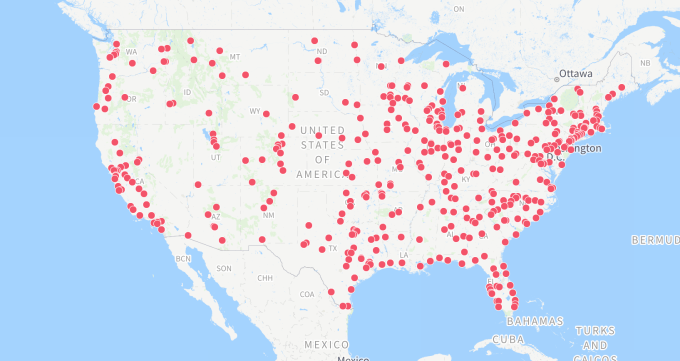Google’s controversial plan to launch products custom made for China has been panned by politicians, free speech advocates, ex-staff and many others, but there appears to be some support within Google from employees who actually favor the strategy.
Under a project code-named “Dragonfly,” Google is reportedly planning to introduce a censored search product and a news app in what would mark a remarkable return to China after the firm left in 2010.
The services have triggered a wave of controversy since word of them was first reported in August. Just this week, a public memo written by current Google staff urged that Dragonfly should be dropped because it “aids the powerful in oppressing the vulnerable.” The internal backlash has been fairly well covered, but there is also support inside the search giant. A pro-Dragonfly letter that has been in circulation for a number of weeks has picked up 500 signatures in an effort to stop the project from being dropped.
The letter — which was provided to TechCrunch by a source within Google — principally argues that China is part of Google’s wider mission of connecting people with information.
Here’s a core excerpt:
Dragonfly is well aligned with Google’s mission. China has the largest number of Internet users of all countries in the world, and yet, most of Google’s services are unavailable in China. This situation heavily contradicts our mission, “to organize the world’s information and make it universally accessible and useful”. While there are some prior success, Google should keep the effort in finding out how to bring more of our products and services, including Search, to the Chinese users.
That’s a pretty simplistic take on the situation but, in fairness, the letter does concede that Dragonfly is a “challenging product” that could “end up doing more harm than good.” Simply dumping it, the employees argue, would miss out on a chance to “learn how different approaches may work out in China.”
The letter is unsigned — unlike yesterday’s anti-Dragonfly memo, which is on Medium — and it is tempting to cast it as some artificial, management-led response to the situation; particularly since Google CEO Sundar Pichai is due to face Congress next week. However, TechCrunch understands that it was submitted anonymously by an employee using an internal system.
It is not surprising to see some at Google argue in favor of entering China — there are over 85,000 people working for Google, that’s a lot of opinions and viewpoints as we’ve seen before — but it is difficult to present a credible argument that the move is anything but financially-driven.
Search still makes up the bulk of Google’s revenues and, with China’s the largest market in the world for smartphone users, app spending and more, the company is leaving money off the table by opting out of the country.
Unlike many hot button issues in Silicon Valley, controversy over Google’s Dragonfly project doesn’t break down along domestic political party lines. It’s rare to find an issue that Vice President Mike Pence and left-leaning free speech advocates agree on — a fact that makes the apparent internal support for Dragonfly even more puzzling.
For better or worse, it’s usually easier to understand positions motivated specifically by partisan animus. We’re likely to hear American politicians on both sides of the aisle take a swing at Google on the issue next week when Google CEO Sundar Pichai appears before the House Judiciary Committee.
There may be a legion of principled engineers with good intentions who live and work far from China, but the real question is what the strategy of those leading Dragonfly and other initiatives is. And, on that question, there is a lot of uncertainty.
Former Googlers in Asia have told TechCrunch that they don’t believe Google’s management grasps the significance of re-entry into China. It’s a tough question and this memo, despite gaining some popularity, doesn’t really offer a particularly compelling or different answer. It does show, however, that some people in Google still believe that the company is focused on doing good. That’s something — both with respect to Google’s peers in the tech industry (Yes, that’s you, Facebook), and in light of Google’s own assorted recent ethical crises.
Here’s the pro-Dragonfly letter in full:
Dragonfly is Google’s Mission, Too
Dear Googlers,
Project Dragonfly, which aims at bringing Search back to China, has been a source of controversy since revealed. Some expect Dragonfly to bring benefits to the Chinese users and support it; others have concerns of adhering to censorship and surveillance requirements by the Chinese government and oppose it. Some are comparing it to Maven and have even resigned to call for cancellation.
We understand that Googlers are diverse: Googlers vary in their backgrounds and values, and hence, may focus on different aspects of Dragonfly and have different expectations. Nonetheless, we believe that continuing work on Dragonfly is needed, and will be helpful to all Googlers regardless of their backgrounds and expectations.
Dragonfly is well aligned with Google’s mission. China has the largest number of Internet users of all countries in the world, and yet, most of Google’s services are unavailable in China. This situation heavily contradicts our mission, “to organize the world’s information and make it universally accessible and useful”. While there are some prior success, Google should keep the effort in finding out how to bring more of our products and services, including Search, to the Chinese users.
Dragonfly still faces many difficulties and uncertainties, which can only be resolved by continuing efforts. The regulation requirements set by the Chinese government (like censorship) makes Dragonfly a challenging project. If we are not careful enough, the project can end up doing more harm than good. In any case, only with continuing efforts on Dragonfly can we learn how different approaches may work out in China, and find out if there is a way that is good for both the Chinese users and Google. Even if we fail, the findings can still be useful for bringing other services to China.
Given the good motivation and the challenging nature of the project, we believe that Google should continue on Dragonfly, which benefits both Google and the massive user base in China.
We hereby request you to sign and support Project Dragonfly to be continued and fully explored.
Signed






 That’s changing today, though. The company is opening up Fi — and renaming it to Google Fi — and officially expanding device support to most popular Android phones, as well as iPhones. Supported
That’s changing today, though. The company is opening up Fi — and renaming it to Google Fi — and officially expanding device support to most popular Android phones, as well as iPhones. Supported 